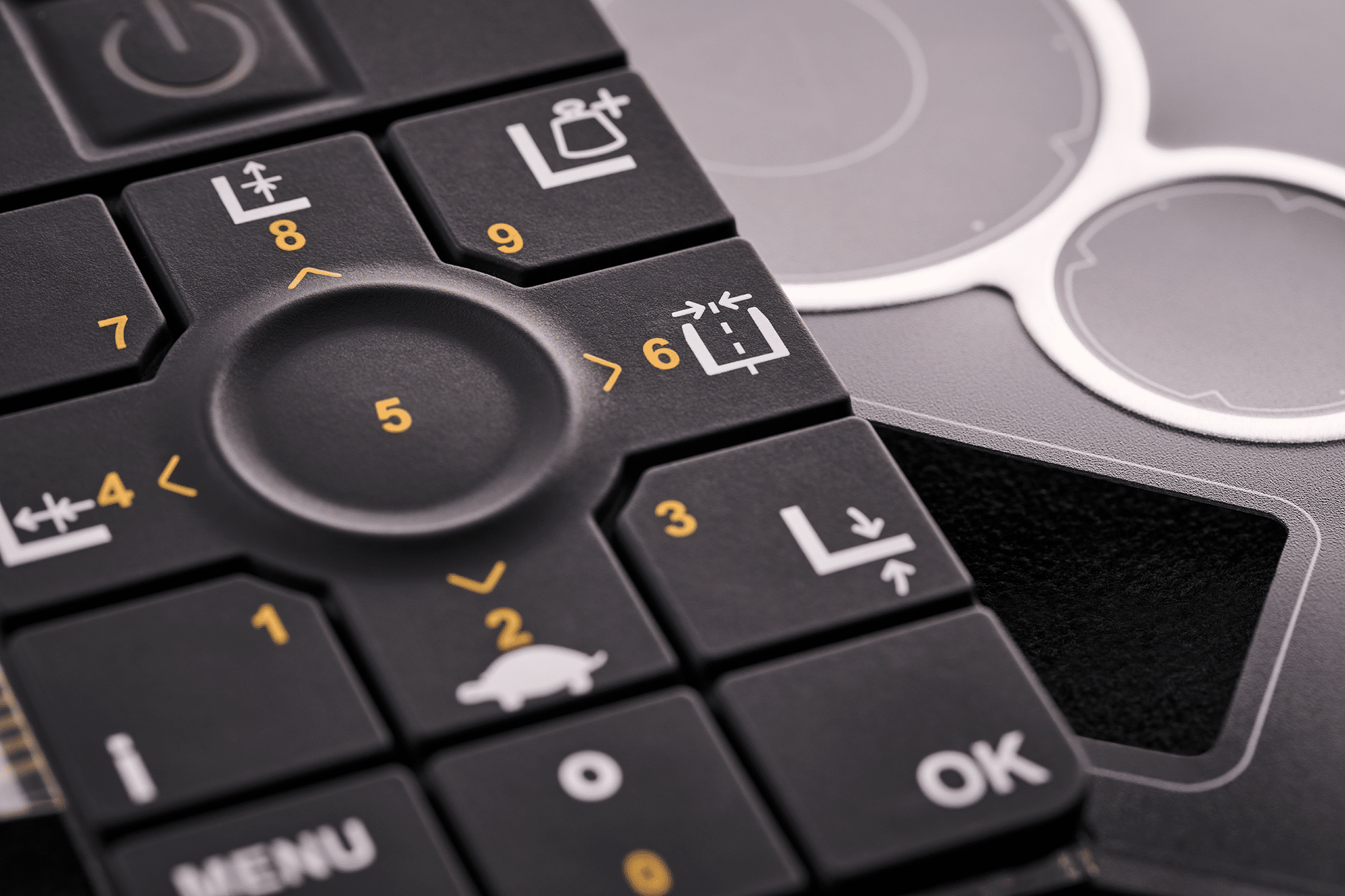The Production Refine Behind Membrane Layer Switch: What You Required to Know
The manufacturing procedure behind membrane switches over combines cautious layout, material option, and quality assurance. It starts with comprehending the details of membrane button style and proceeds with numerous stages, consisting of material selections and printing techniques. Each stage plays a crucial function in making certain performance and longevity. Nevertheless, the complexities of layer building and the rigorous testing criteria may reveal understandings that are not promptly apparent. What lies past these fundamental elements?
Comprehending Membrane Layer Change Layout
Membrane layer buttons may appear basic at initial glance, their design includes detailed considerations that guarantee functionality and sturdiness. The style process begins with a complete understanding of customer needs, consisting of the interface's designated application and environmental factors. Functional designs is an essential aspect, as the layout must facilitate convenience of usage while making certain that responsive comments meets user expectations.Moreover, the layering of parts, such as visuals overlays, sticky layers, and conductive traces, should be precisely crafted. membrane switch. This split setup not only influences the button's responsiveness however also influences its long life. Interest is given to the securing methods employed to protect versus wetness and dust, which can jeopardize performance. In addition, style considerations reach appearances, where color design and aesthetic clearness enhance customer experience. Eventually, the layout of membrane layer switches equilibriums functionality, customer experience, and toughness, guaranteeing that they fulfill the demands of numerous applications successfully
Materials Utilized in Membrane Layer Change Production
When choosing products for membrane button manufacturing, it is important to contemplate both efficiency and resilience. The key materials include polyester and polycarbonate movies, which offer adaptability and strength. These movies are often coated with glue to guarantee appropriate bonding to substratums. Conductive inks, generally made up of silver or carbon, are critical for producing electric connections within the switch, enabling for reliable operation.Additionally, a protective layer, such as a tough layer, is frequently put on boost scratch resistance and durability. The selection of backing material, such as acrylic or foam, can significantly influence the button's tactile feel and general customer experience. Numerous ecological factors, including temperature and moisture, must lead product option to assure peak performance in specific applications. Ultimately, the best combination of materials adds to the membrane switch's functionality and lifespan, making informed choices important for makers.
The Printing Process: Creating Graphics and Text
The printing process in membrane switch production plays a significant duty in generating high-quality graphics and message. Numerous visuals style methods are employed to guarantee aesthetic allure and performance, while cautious ink selection methods are essential for durability and efficiency. Recognizing these aspects is essential for achieving ideal cause membrane switch layout.
Graphic Layout Techniques
Graphic style techniques play an essential duty in the printing process of membrane layer switches, as they specify exactly how graphics and message will eventually show up on the last product. Efficient graphic style involves the critical use of shades, layouts, and typefaces to enhance readability and aesthetic appeal. Designers often use vector graphics for scalability, guaranteeing that photos remain sharp at numerous dimensions. Furthermore, focus to contrast and positioning is crucial, as it influences individual communication and visual quality. The unification of branding components, such as logos, need to be taken care of with like keep brand name integrity. Generally, thoughtful visuals layout techniques contribute substantially to the capability and beauty of membrane layer buttons, influencing individual experience and item efficiency.
Ink Option Methods
Choosing the appropriate ink is important for attaining the wanted visual high quality and durability in membrane switch production. Different ink kinds are made use of, including solvent-based, water-based, and UV-curable inks. Each type uses distinct qualities, such as versatility, resistance, and attachment to environmental factors. Solvent-based inks are typically favored for their toughness and lively shades, while water-based inks are a lot more eco-friendly but may have constraints in attachment. UV-curable inks supply fast treating and robust efficiency. In addition, color matching techniques guarantee that the picked inks straighten with style specifications. Inevitably, the selection of ink have to take into consideration aspects such as application technique, substrate compatibility, and end-use requirements to attain premium lead to membrane button graphics and message.
Layer Building and Assembly

Product Selection Refine
A cautious selection of materials is crucial in the production procedure of membrane layer buttons, as it straight affects capability and resilience. The primary materials used include polyester, polycarbonate, and various conductive inks. Polyester is frequently favored for its excellent resistance to chemicals and abrasion, making it suitable for harsh environments. Polycarbonate, on the various other hand, gives premium quality and effect resistance, which is helpful for applications calling for exposure and toughness. Conductive inks, usually composed of silver or carbon, are vital for developing trusted electric pathways. Additionally, the choice of glue products affects the overall honesty of the button - membrane switch. Assessing factors such as ecological direct exposure, tactile responses, and visual requirements overviews makers in choosing the best products for their certain applications
Layer Adhesion Strategies
Adhering layers in membrane button building is a vital procedure that ensures functionality and durability. Various attachment methods are used to protect ideal bonding between layers, which commonly include the usage of adhesives, warm, and stress. Pressure-sensitive adhesives (PSAs) are Get More Information frequently utilized for their simplicity of application and immediate bonding capacities. Additionally, thermal bonding strategies can be applied, where warm is used to trigger glue homes, safeguarding a strong bond. The option of attachment technique greatly depends on the products involved and the certain application requirements of the membrane layer button. Proper placement and uniform application of adhesives are necessary to prevent problems, safeguarding the switch operates properly throughout its designated life-span.
Quality Assurance Procedures
Guaranteeing high quality control throughout the layer building and construction and assembly of membrane buttons is crucial for maintaining performance and integrity. This procedure generally includes numerous critical procedures, consisting of thorough assessments at each phase of manufacturing. Producers use innovative testing methods, such as peel tests and adhesion evaluations, to validate the honesty of layer bonds. Additionally, visual evaluations are carried out to determine any type of flaws in printing or product incongruities. Ecological problems, such as temperature level and moisture, are very carefully checked to assure ideal healing and adhesion. Regular calibration of equipment aids maintain exact production criteria. By applying these high quality control actions, producers can significantly reduce the danger of product failure, ensuring that the final membrane switches over satisfy the required specifications and consumer expectations.
Evaluating and Quality Control Actions

Innovations in Membrane Layer Change Technology
As innovations in innovation continue to advance, membrane buttons are taking advantage of innovative advancements that enhance their capability and user experience. One remarkable advancement is the integration of capacitive touch innovation, which permits even more receptive and user-friendly interface. This shift not just improves aesthetics however additionally decreases mechanical damage, prolonging the life-span of the switches.Additionally, developments in visuals overlay products have caused improved toughness and resistance to environmental aspects such as dampness and UV light. These materials now supply improved quality and brightness, additional boosting the visual appeal.Furthermore, the consolidation of wise modern technology is transforming membrane layer switches over into interactive control panels, making it possible for connectivity with IoT gadgets. This connection promotes a smooth user experience, paving the means for applications in various sectors, from healthcare to customer electronics. Jointly, these developments setting membrane changes as essential elements in modern-day tool design.
Frequently Asked Questions
The length of time Does the Membrane Switch Production Refine Take?
The duration of the membrane button production process can vary substantially. Variables such as intricacy, materials made use of, and manufacturing volume impact timelines, with typical manufacturing ranging from a couple of days to numerous weeks for conclusion.
What Are the Typical Applications for Membrane Layer Switches?
Membrane switches are generally made use of in numerous markets, including vehicle controls, home devices, medical gadgets, and consumer electronic devices (membrane switch). Their flexibility and toughness make them ideal for applications calling for easy to use interfaces and reputable efficiency in varied environments
Can Membrane Layer Changes Be Custom-made for Particular Demands?

What Is the Life expectancy of a Common Membrane Layer Switch?
The life-span of a regular membrane layer button differs, but usually, it ranges from 1 to 5 million cycles. Aspects such as use, atmosphere, and worldly quality substantially affect durability and overall performance in time.

Are Membrane Layer Switches Environmentally Friendly?
The ecological kindness of membrane layer changes differs. Some materials used might not be recyclable, while others can be environment-friendly. The overall effect depends on manufacturing methods and materials, demanding careful consideration during option and disposal. The production process behind membrane layer changes combines careful layout, material choice, and high quality control. It begins with recognizing the complexities of membrane switch style and proceeds through various stages, consisting of material options and printing methods. When choosing materials for membrane More about the author layer switch production, it is necessary to contemplate both performance and longevity. A cautious selection of products is vital in the production process of membrane switches, as it straight affects functionality and toughness. The option of attachment technique greatly depends on the materials involved and the details application demands of the membrane switch.